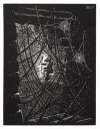Serge
Poliakoff
Serge Poliakoff, a Russian-born French artist, is celebrated for his vibrant abstract compositions that resonate with harmonious colours and forms. If you’re looking for original Serge Poliakoff prints and editions for sale or would like to sell, request a complimentary valuation and browse our network's most in-demand works.
Serge Poliakoff art for sale
Discover Serge Poliakoff prints for sale, exclusively available through our private network of collectors. Explore signed and unsigned screenprints, lithographs, digital prints, and rare editioned proof prints by era-defining blue chip artists.
Sell Your Art
with Us
with Us
Join Our Network of Collectors. Buy, Sell and Track Demand
Biography
Born in Moscow in 1900, Poliakoff fled his homeland amidst the turmoil of the Russian Revolution, embarking on a nomadic journey that led him through Constantinople and Eastern Europe before he settled in Paris in 1923. Initially drawn to music, Poliakoff's inclinations took flight in Paris, where the city's rich innovation inspired him to enrol at the Académie de la Grande Chaumière. His studies furthered under influential painters whose guidance was instrumental in shaping Poliakoff's early artistic direction.
Poliakoff's oeuvre evolved significantly over the years. His initial work, marked by figuration, gradually gave way to an exploration of abstract forms. A pivotal moment in his career came through his acquaintance with fellow artists Sonia and Robert Delaunay. Their theories on colour and abstraction resonated deeply with Poliakoff, propelling him towards the signature style that would define his career – where colour became the primary vehicle of expression, and form was reduced to its most elemental.
Throughout the 1940s and 1950s, Poliakoff's work matured, and he began to gain recognition for his unique approach to abstraction. His compositions, characterised by a sophisticated and intuitive arrangement of form and a rich palette, avoided representational imagery, focusing instead on the emotive potential of colour and the interplay between shapes.
Poliakoff's contributions were celebrated in numerous solo and group exhibitions, most notably his inclusion in the groundbreaking 1961 exhibition, The Art of Assemblage, at the Museum of Modern Art in New York. His works have found homes in several prestigious collections, including the Tate Gallery in London and the Centre Pompidou in Paris.
Passing away in 1969, Poliakoff left behind a body of work that continues to captivate and inspire, a vivid reminder of his unyielding pursuit of visual harmony and the universal language of abstract art.




































